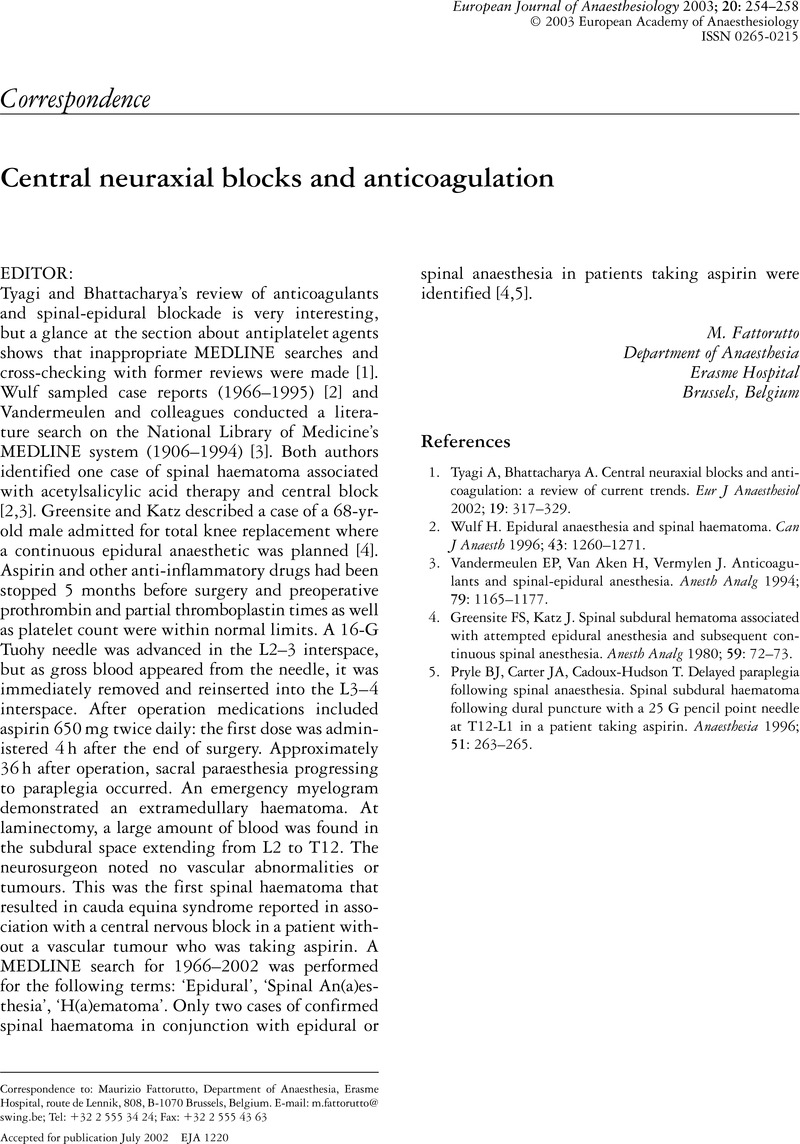No CrossRef data available.
Article contents
Central neuraxial blocks and anticoagulation
Published online by Cambridge University Press: 02 June 2005
Abstract
An abstract is not available for this content so a preview has been provided. Please use the Get access link above for information on how to access this content.

- Type
- Correspondence
- Information
- Copyright
- © 2003 European Society of Anaesthesiology
References
Tyagi A, Bhattacharya A. Central neuraxial blocks and anticoagulation: a review of current trends. Eur J Anaesthesiol 2002; 19: 317–329.Google Scholar
Vandermeulen EP, Van Aken H, Vermylen J. Anticoagulants and spinal-epidural anesthesia. Anesth Analg 1994; 79: 1165–1177.Google Scholar
Greensite FS, Katz J. Spinal subdural hematoma associated with attempted epidural anesthesia and subsequent continuous spinal anesthesia. Anesth Analg 1980; 59: 72–73.Google Scholar
Pryle BJ, Carter JA, Cadoux-Hudson T. Delayed paraplegia following spinal anaesthesia. Spinal subdural haematoma following dural puncture with a 25 G pencil point needle at T12-L1 in a patient taking aspirin. Anaesthesia 1996; 51: 263–265.Google Scholar




